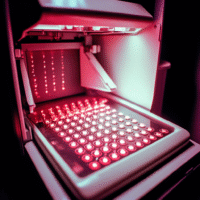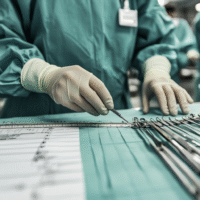Comparison of the Effect of Two Recruitment Manoeuvres to Conventional Ventilation on Lung Atelectasis in Paediatric Laparoscopic Surgery: A Prospective Randomised Controlled Trial
Background
Paediatric laparoscopic surgeries often result in pulmonary atelectasis. This study aimed to compare the use of recruitment manoeuvres or continuous positive airway pressure (CPAP) to conventional ventilation in preventing atelectasis.
Objective
The primary objective was to compare the degree of lung atelectasis diagnosed by lung ultrasound (LUS) using three different ventilation techniques in children undergoing laparoscopic surgeries.
Design
Randomised, prospective three-arm trial conducted at a single institute, tertiary care, teaching hospital.
Patients
Children up to the age of 10 years undergoing laparoscopic surgery with pneumoperitoneum lasting for more than 30 minutes.
Intervention
Patients were randomly allocated to one of three study groups: CG group, RM group, and CPAP group, each receiving different ventilation techniques.
Outcome Measures
Lung atelectasis score at closure assessed by LUS.
Results
At the time of closure, the LUS for the RM and CPAP groups were significantly lower than the CG group. The PaO2/FiO2 ratio was also significantly higher for the RM and CPAP groups than the CG group at the time of pneumoperitoneum.
Conclusion
Application of a recruitment manoeuvre post-intubation or CPAP during induction and maintenance with a high PEEP leads to less atelectasis than conventional ventilation during laparoscopic surgery in paediatric patients.
Trial Registry
CTRI/2019/08/02058
AI-Driven Solutions for Clinical Trials and Patient Care
Clinical trials are essential for developing safe and effective treatments. Our AI-driven platform, DocSym, consolidates ICD-11 standards, clinical protocols, and research into an easily accessible knowledge base for clinicians.
Streamlining operations is crucial in today’s healthcare environment. Our mobile apps support scheduling, monitoring treatments, and telemedicine, making it easier to manage patient care and expand services digitally.
By using AI, clinics can enhance their workflows, improve patient outcomes, and reduce paper routines. Learn more about how we can help at aidevmd.com.




























